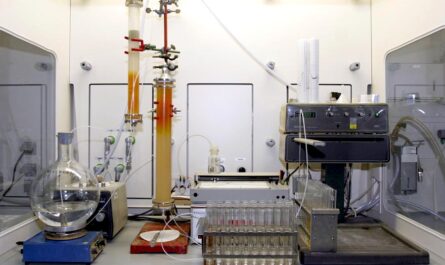Bone tumors can be benign or cancerous and occur in different parts of the bones. They include osteosarcoma, Ewing’s sarcoma, chondrosarcoma, and multiple myeloma. Some key statistics about bone tumors:
– Around 5,300 new cases of bone cancer are diagnosed each year in the United States.
– Osteosarcoma is the most common type of bone cancer and usually develops in children and young adults between 10-25 years old.
– Bone metastases or cancer that has spread from another area like the lungs or breast is more common than primary bone cancers.
Surgical Treatment of Bone Tumors
Surgery is a main treatment option for many types of Bone Tumor Ablation Devices. The surgeon will remove as much of the tumor as possible along with some healthy bone tissue. This is called resection. However, surgery has limitations in some cases:
– Tumors located near important tissues like nerves make complete resection difficult without causing functional problems.
– Some tumors are too large or have spread too much to be entirely removed by surgery.
– Repeated surgeries may be needed if the tumor recurs, but this risks more damage to the bone and surrounding tissues.
– Amputation may be necessary for large tumors in the arms or legs. This drastically affects a patient’s quality of life.
Advances in Ablation Therapy
To address these surgical limitations, minimally invasive ablation techniques have been developed as alternatives or additions to surgery. Ablation uses several technologies to locally destroy tumor tissue through heat, cold, alcohol, radiation or other means. Some key benefits of ablation include:
– It can treats tumors considered inoperable or where surgery risks too much damage.
– Repeated treatments are possible if needed with less risk of further injury.
– Preserves more of the normal bone and maintains function compared to extensive resections or amputations.
– Patients often experience less pain, shorter hospital stays and quicker recovery times than with open surgery.
– Can be used alongside surgery for tumors close to important structures or that extend beyond what can be safely resected.
Laser Ablation for Bone Tumors
Laser ablation uses laser energy delivered through a probe inserted into the tumor site under CT or ultrasound guidance. The laser heats and destroys cancerous tissue without damaging surrounding healthy areas. Some benefits are:
– Precise targeting ability allows treating tumors dangerously close to critical structures.
– Minimal invasiveness leads to less pain, scarring and risk of infection compared to traditional surgery.
– Can precisely ablate tumor margins during or after resection to eliminate any remaining microscopic disease.
– Repeated treatments possible if needed for recurring tumors without significant added risk.
– Usually performed as an outpatient procedure under local anesthesia for lower risk and cost.
Radiofrequency Ablation for Bone Tumor Ablation Devices
Radiofrequency ablation (RFA) uses high-frequency alternating current delivered through a needle electrode placed within the tumor. The electric current heats and kills cancer cells. RFA for bone tumors has benefits such as:
– Effective for both primary and metastatic bone tumors, including osteosarcoma.
– Guidance using CT, fluoroscopy, or ultrasound allows targeted treatment of tumors in difficult locations.
– Quick recovery times and less pain than extensive resections.
– Minimally invasive approach reduces risks of surgical complications and repeat procedures.
– Can be combined with resection surgery to destroy remaining cancer at tumor margins.
Evolving Cryotherapy Options
Cryoablation places a probe through which extremely cold gases or liquids are circulated to rapidly freeze and destroy tumor tissue. Benefits include very localized treatment and ability to target multiple tumors in one procedure. Technical challenges have limited its use for bone tumors but newer technologies may expand cryoablation applications.
While longer-term outcomes data is still needed, initial studies show tumor ablation provides pain relief and local tumor control comparable to surgery, especially for inoperable cases. Combining ablation with resection also yields high rates of disease control. As techniques advance, ablations may play a larger role either standalone or combined with surgery in managing primary and metastatic bone tumors.
Ongoing research focuses on refining imaging guidance, cryo- and laser probes, and methods to accurately define tumor margins for complete destruction. Ablation could help avoid amputations and preserve joint function for certain sarcomas. Integrating ablations into current multimodal care involving chemotherapy, may someday allow organ-sparing treatments even for advanced sarcomas. Wider adoption will rely on demonstrating long-term oncologic efficacy and cost-effectiveness versus traditional methods. Overall, advances offer new minimally invasive options for safely destroying bone tumors.
Gets More Insights on: Bone Tumor Ablation Devices



